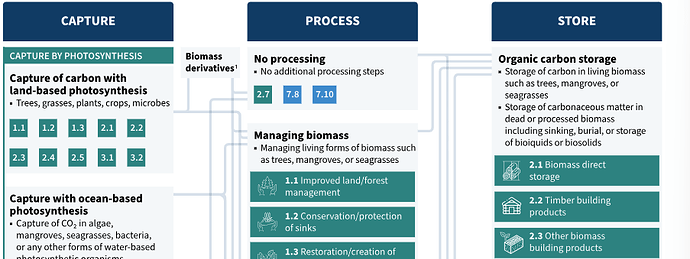In a article that they have recently published at RMI, ‘Following the Carbon: A New Lens on the Carbon Dioxide Removal Ecosystem’, Rudy Kahsar and Annina Sartor have presented a novel categorization of CDR methods based on the manner in which carbon is captured, processed and stored.
Key takeaways from the article:
- A number of methodologies to categorize different CDR methods have emerged since CDR was introduced as a tool for combating climate change.
- The first approach uses the “key input” that is used for the employment of a given CDR method as an analytical lens, resulting in the emergence of classifications such as ‘biogenic, geochemical or synthetic CDR’.
- This approach sheds light on the constraints stemming from the nature of the materials that are used to employ certain CDR methods.
- The second approach, which is also frequently utilized, uses commonalities pertaining to the processes for the purpose of categorizing CDR methods. The methods falling within the scope of this methodology include ‘air, ocean, land and rock CDR’.
- Classifying CDR methods based on the commonalities between the processes that lead to their deployment, this approach can be utilized for tackling ‘social, legal and behavioral’ problems associated with CDR deployment.
- Since these approaches are used to analyze the CDR framework from diverging perspectives, they have many commonalities. For instance, the implementation of ocean CDR methods may necessitate the utilization of materials such as ‘biomass, alkaline material or energy’, but those employing them need to resolve social issues posed by engagement with oceans and local communities living close to oceans regardless of the method that is used.
- Focusing on the manner in which carbon is captured, processed and stored, the article proposes a third approach that can be useful for contemplating a wide range of CDR approaches from a novel lens.
- The following image can be utilized to detect the stages the various CDR methods included in the Applied Innovation Roadmap belong to:
- The carbon entering the chart from the left cannot disappear or be eliminated. In addition, the carbon always flows from the left to the right, leaving no margin for the reversal of the process.
- The above chart offers a new approach for detecting the extent to which there are similarities between different CDR methods regarding the manner in which they capture, process and store carbon.
- In addition, it illustrates that CDR methods that are typically characterized by one of the steps (i.e. process) can make use of other steps (i.e. capture or storage) that differ from the step that has traditionally been used to identify them.
Read the article here: Following the Carbon: A New Lens on the Carbon Dioxide Removal Ecosystem - RMI
